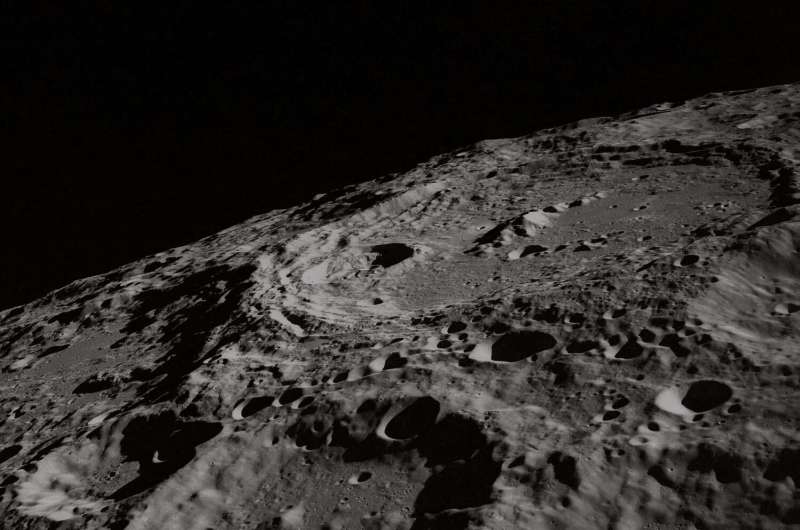Credit: CC0 Public Domain
(Phys.org)—A team of researchers with Purdue University has found evidence from lunar-mapping spacecraft that the moon may have large lava tubes that could conceivably be used to house astronauts and supplies. In their paper published in the journal Icarus, the team describes their study of data from NASA's Gravity Recovery and Interior Laboratory (GRAIL) twin spacecraft and outline the evidence for large lava tubes.
Prior research here on Earth has shown that lava flowing across a surface can form a shell of sorts as it cools, and when the shell collapses, a hollowed-out underground space remains—geologists call them lava tubes. Examples have been found in Hawaii and Iceland. Now, the researchers at Purdue believe they have found evidence that such structures might exist just below the surface of the moon in some places as well.
The evidence from GRAIL consists of very small variations in the moon's gravitational pull, suggesting differences in density below the surface. There is also some evidence of skylights in photographs taken of the moon near the areas of the gravitational variations. Skylights are areas on the surface that occur when part of a lava tube collapses creating a window of sorts into the tube below. The team built a geology-based computer model using the data they had gathered from GRAIL and the photographs, along with other known information about lava tubes here on Earth and other features unique to the moon. The model then offered predictions regarding the possible existence of lava tubes below the surface of the moon and how big and stable they might be—the researchers reasoned that they could be much larger than those found on Earth due to less pressure from gravity.
The model indicated that lava tubes were likely present and that they could be as wide as three miles across and still remain stable. Such a wide, long tube, the researchers note, might be an ideal form of shelter for future astronauts—they could live in the tubes along with all their gear free from the fear of being struck by space debris and the constant barrage of solar radiation. It would likely be easier to manage temperature control as well, making life less dangerous for future moon residents.
More information: David M. Blair et al, The structural stability of lunar lava tubes, Icarus (2017). DOI: 10.1016/j.icarus.2016.10.008
Abstract
Mounting evidence from the SELENE, LRO, and GRAIL spacecraft suggests the presence of vacant lava tubes under the surface of the Moon. GRAIL evidence, in particular, suggests that some may be more than a kilometer in width. Such large sublunarean structures would be of great benefit to future human exploration of the Moon, providing shelter from the harsh environment at the surface—but could empty lava tubes of this size be stable under lunar conditions? And what is the largest size at which they could remain structurally sound? We address these questions by creating elasto-plastic finite element models of lava tubes using the Abaqus modeling software and examining where there is local material failure in the tube's roof. We assess the strength of the rock body using the Geological Strength Index method with values appropriate to the Moon, assign it a basaltic density derived from a modern re-analysis of lunar samples, and assume a 3:1 width-to-height ratio for the lava tube. Our results show that the stability of a lava tube depends on its width, its roof thickness, and whether the rock comprising the structure begins in a lithostatic or Poisson stress state. With a roof 2 m thick, lava tubes a kilometer or more in width can remain stable, supporting inferences from GRAIL observations. The theoretical maximum size of a lunar lava tube depends on a variety of factors, but given sufficient burial depth (500 m) and an initial lithostatic stress state, our results show that lava tubes up to 5 km wide may be able to remain structurally stable.
Journal information: Icarus
© 2016 Phys.org
























